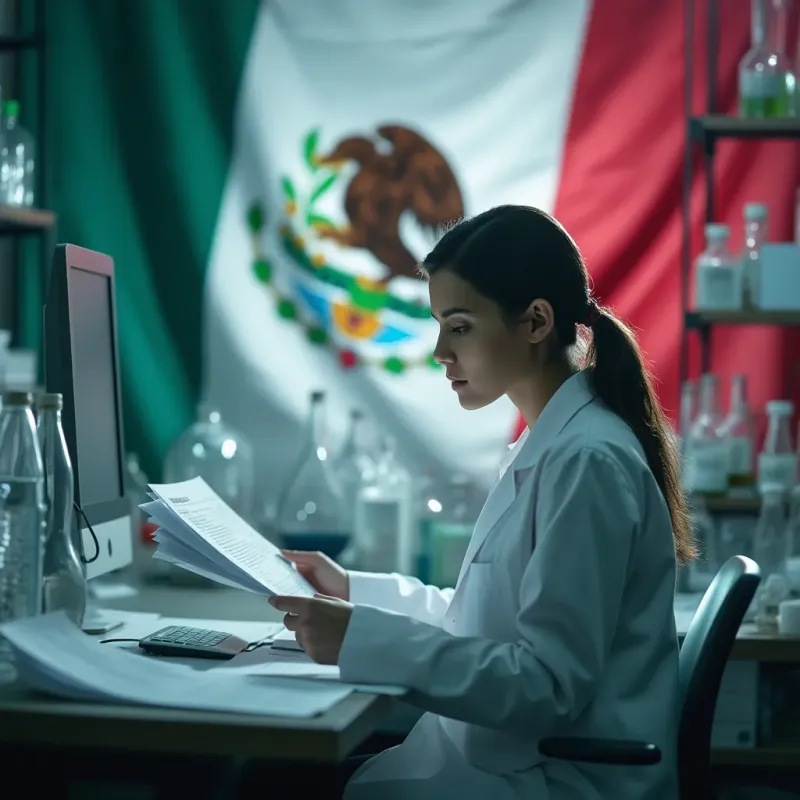Chemical regulations
Americas
Mexico - NOM-018-STPS-2015
What is NOM-018-STPS-2015?
In Mexico, the regulatory framework for communicating risks related to chemicals in the workplace is the Official Mexican Standard NOM-018-STPS-2015, Harmonized System for the Identification and Communication of Hazards and Risks from Hazardous Chemical Substances in Workplaces.
Its main goal is to align Mexico with the Globally Harmonized System (GHS), specifically its fifth revision. NOM-018-STPS-2015 seeks to standardize how hazards are communicated to workers, ensuring a safer work environment through the consistent use of Safety Data Sheets (SDS) and clear, unified labeling.
However, the technical process for classifying chemical hazards in Mexico is governed by the Mexican Standard NMX-R-019-SCFI-2011, which serves as the harmonized system for hazard classification and communication. It’s crucial to understand that while this standard dictates how hazards should be classified, hazard communication through labeling and the Safety Data Sheet (SDS) in the workplace must be done in accordance with NOM-018-STPS-2015.
What are the mandatory sections of a Safety Data Sheet (SDS) under NOM-018-STPS-2015?
The Safety Data Sheet (SDS) must include 16 specific sections:
- Identification of the hazardous chemical substance or mixture and of the supplier or manufacturer.
- Hazard identification.
- Composition/information on ingredients.
- First-aid measures.
- Firefighting measures.
- Accidental release measures.
- Handling and storage.
- Exposure controls/personal protection.
- Physical and chemical properties.
- Stability and reactivity.
- Toxicological information.
- Ecotoxicological information.
- Disposal considerations.
- Transport information.
- Regulatory information.
- Other information, including those related to preparation and review of the safety data sheet.

How does NOM-018-STPS-2015 address labeling requirements?
Labeling of chemicals in Mexico must be approached from a dual perspective: labeling for the workplace (regulated by the Ministry of Labor - STPS) and labeling for public marketing (mainly regulated by the Ministry of Economy and COFEPRIS).
1.-Workplace Labeling (NOM-018-STPS-2015):
This labeling is based on the GHS and is mandatory for all containers of hazardous chemicals within a workplace. Its aim is worker safety. The required elements in Spanish are:
- Name of the substance or mixture.
- Signal word (“Danger” or “Warning”).
- GHS hazard pictograms.
- Hazard statements (H phrases).
- Precautionary statements (P phrases).
- Name, address, and phone number of the manufacturer or importer.
2.-Labeling for Marketing and the End Consumer:
To market a chemical product in Mexico, the label must fulfill the basic commercial information requirements and, additionally, comply with health or product-specific regulations.
Basic Commercial Standard: NOM-050-SCFI-2004 establishes the general commercial information all products must present to the consumer, such as product name, quantity, country of origin, and details of the responsible party in Mexico. This is the baseline for any product intended for public sale.
Supplementary and Specific Standards: On top of NOM-050, additional requirements from other NOMs must be added according to the product’s nature. It’s crucial to identify and comply with these extra regulatory layers. For example:
- NOM-189-SSA1/SCFI-2018 (Household Cleaning Products): Requires specific ingredient information, usage instructions, and precautionary and risk statements tailored for a household setting.
- NOM-003-SSA1-2006 (Paints, Inks, Varnishes): Requires statements regarding lead and other heavy metal content, plus specific health warnings to prevent poisoning.
- NOM-232-SSA1-2009 (Pesticides): Establishes very strict requirements for pesticide labeling, including COFEPRIS sanitary registration number, color bands according to toxicological category, antidotes, and first-aid measures.
- NOM-141-SSA1/SCFI-2012 (Cosmetics): Sets requirements for labeling prepackaged cosmetic products, including the ingredient list in INCI nomenclature, usage instructions, and precautionary statements.
For a Regulatory Affairs professional, the key is to thoroughly analyze the product to determine which set of labeling regulations apply and ensure the final label integrates all required elements clearly and correctly.
What are the mandatory training requirements under NOM-018-STPS-2015?
A fundamental pillar of NOM-018-STPS-2015 is training and instruction. According to article 6.7 of NOM-018-STPS-2015, employers are required to train all workers handling chemicals on:
- How to interpret label elements and SDS content.
- The specific hazards of the chemicals present in their work area.
- Safe work procedures, correct PPE use, and emergency response measures.
This training must be continuous and updated, especially when new chemicals are introduced or processes change, ensuring that workers’ knowledge is always up-to-date for their protection.
Become an expert in NOM-018-STPS-2015



